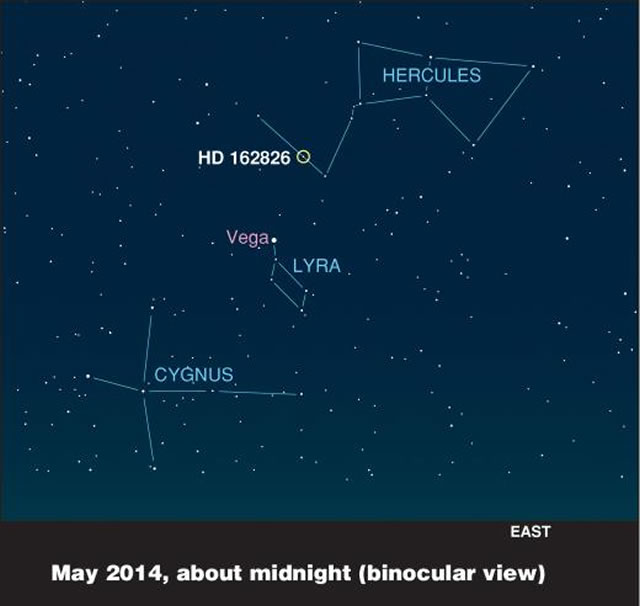
Un team di ricercatori guidato dall’astronomo Ivan Ramirez dall’Università di Austin, nel Texas, ha identificato il primo “fratello” del Sole, una stella che è nata quasi certamente dalla stessa nube di gas e polvere della nostra stella. I metodi usati da Ramirez aiuteranno certamente altri astronomi a trovare altri “fratelli solari”, un lavoro che potrebbe portare ad una comprensione di come e dove il nostro Sole si sia formato e di come il nostro sistema solare sia diventato ospitale per la vita.
L’opera sarà pubblicata nel primo numero di giugno de “The Astrophysical Journal”. “Vogliamo sapere dove siamo nati”, ha detto Ramirez. “Se riusciamo a capire in quale parte della galassia il Sole si sia formato, siamo in grado di vincolare le condizioni del sistema solare primordiale. Questo potrebbe aiutarci a capire perché siamo qui. “Inoltre, c’è una possibilità, “piccola, ma non pari a zero”, sostiene sempre Ramirez, che questi stelle strette parenti del sole potrebbero avere pianeti che ospitano la vita. Nei loro primi giorni all’interno del loro gruppo di nascita, spiega, le collisioni avrebbero spazzato via pezzi dai pianeti e questi frammenti potrebbero aver viaggiato tra i sistemi solari, e forse questo meccanismo potrebbe essere stato responsabile della vita primitiva sulla Terra. Oppure, frammenti della terra avrebbero potuto trasportare la vita a pianeti in orbita attorno altri fratelli solari.
«Con queste dinamiche si potrebbe sostenere quindi che i fratelli solari sono i candidati chiave nella ricerca di vita extraterrestre”, ha detto Ramirez.
Questa stella sorella del Sole è stata chiamata HD 162826, ed è una stella del 15 per cento più massiccia del Sole che si trova a 110 anni luce di distanza nella costellazione di Ercole. La stella non è visibile ad occhio nudo, ma può essere facilmente individuata con un binocolo a bassa potenza, non lontano dalla luminosa stella Vega. Il team ha identificato HD 162826 come stretta parente del Sole, seguendo 30 possibili candidati trovati da diversi gruppi di ricerca di tutto il mondo, concentrati proprio sulla ricerca del gemello solare.
A team of researchers led by University of Texas at Austin astronomer Ivan Ramirez has identified the first “sibling” of the Sun — a star that was almost certainly born from the same cloud of gas and dust as our star. Ramirez’ methods will help other astronomers find other “solar siblings,” work that could lead to an understanding of how and where our Sun formed, and how our solar system became hospitable for life.
The work will be published in the June 1 issue of The Astrophysical Journal. “We want to know where we were born,” Ramirez said. “If we can figure out in what part of the galaxy the Sun formed, we can constrain conditions on the early solar system. That could help us understand why we are here.” Additionally, there is a chance, “small, but not zero,” Ramirez said, that these solar sibling stars could host planets that harbor life. In their earliest days within their birth cluster, he explains, collisions could have knocked chunks off of planets, and these fragments could have travelled between solar systems, and perhaps even may have been responsible for bringing primitive life to Earth. Or, fragments from Earth could have transported life to planets orbiting solar siblings.
“So it could be argued that solar siblings are key candidates in the search for extraterrestrial life,” Ramirez said.
The solar sibling his team identified is a star called HD 162826, a star 15 percent more massive than the Sun, located 110 light-years away in the constellation Hercules. The star is not visible to the unaided eye, but easily can be seen with low-power binoculars, not far from the bright star Vega. The team identified HD 162826 as the Sun’s sibling by following up on 30 possible candidates found by several groups around the world looking for solar siblings.
Source/Continue reading → mcdonaldobservatory.org





















